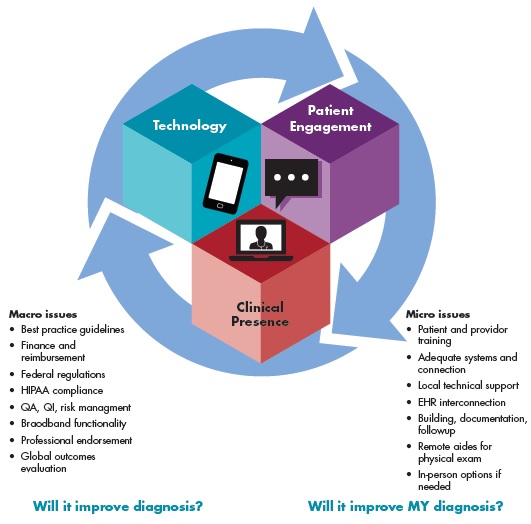Telehealth has quickly moved from a boutique offering to a mainstay of healthcare provision. Telehealth is well suited to support many of the essential elements of effective primary care, especially when blended with in-person visits. Beyond solving the travel problem for rural, elderly, and disadvantaged populations, telehealth supports health screening, disease prevention, coordinated long-term followup, and personalized, patient-centric care.23
In contrast, the efficacy of telediagnosis for acute conditions has yet to be validated. With the tools and functionality of telehealth evolving so rapidly, formal controlled studies will be a challenge. New research will need to be highly focused, iterative, and adaptive to the unique aspects of care provided remotely.23
Besides the apparent limitations on the physical examination, telediagnosis substantially alters many other critical elements of the diagnostic process, including access, engagement, and teamwork in particular. Whether these individual differences affect diagnosis favorably or unfavorably will need to be rigorously studied. Beyond the impact of these different elements, the success of telediagnosis will ultimately be judged by whether it improves the quality, safety, and value of diagnosis for individuals and communities. A host of macro and micro issues may affect these outcomes (Figure 1). Evaluation of these issues from a formal sociotechnical perspective will be essential to account for the contextual factors that affect the outcomes of individual diagnostic encounters.24
Telediagnosis is likely here to stay. The intense use of telehealth we are now witnessing should be accompanied by an equally intense analysis of how to optimize the quality, safety, and humanity of telediagnosis while preserving the convenience and efficiency it provides.
Figure 1. System-level and contextual factors impacting telediagnosis (tele-dx)

Key: HIPAA = Health Insurance Portability and Accountability Act; QA = quality assurance; QI = quality improvement; EHR = electronic health record.



